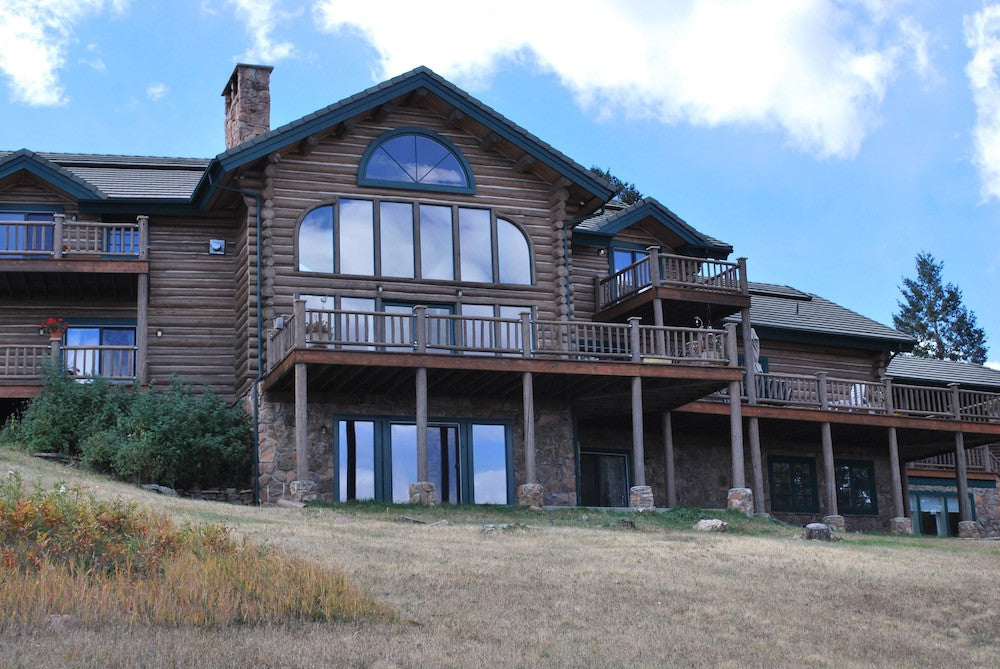How to Choose the Right Stain for Your Log Home: 5 Factors to Consider

Whether you’re staining your log cabin for the first time or you’re giving your log cabin some TLC, selecting the right stain doesn’t have to be a complicated process.
When picking out which stain you want to use, there are lots of considerations.
- Is this the first time the logs have been stained, or is this a maintenance coat?
- What color do you want?
- Should you treat the logs first?
Find out how to answer those questions and others when you’re picking out the right stain for your log home — and get the look and durability you want.
1. Treating the Logs Before You Stain
Once your logs are cleaned, treating the wood with a borate treatment before you stain protects your home from pests such as insects, carpenter ants, dry wood termites, wood-decaying fungi and wood-boring beetles.
This layer of defense can protect your wood for years, but can only be applied to unstained wood to do the job right.
Use Weatherall’s Tim-Bor Professional Borate Insecticide and Fungicide directly onto unstained and unsealed wood with a garden sprayer or brush.
(Note: All existing stain must be removed prior to the borate application.)
2. Applying New Stain vs. Old Stain
Stain absorbs more evenly on bare wood. If your cabin already has a layer of old stain, this older layer will interact with whatever new stain you choose, since it has been absorbed deep into the logs.
If you’re changing the color of your log home and want to go lighter, it may not evenly cover all areas of the old color. You’ll need to completely remove the old stain first.
Additional coats to cover the old stain won’t solve the problem. In fact, it makes the drying process take longer and creates a tacky finish.
3. Choosing the Color You Want
Whether you’re applying stain to your bare logs for the first time or restaining, each new layer of stain on your logs makes the original wood color and grain definition less noticeable.
You can always add more layers of stain to darken the appearance of your wood, but once a layer is applied, you can’t lighten the color at the end.
Test a small area on your wood prior to applying the stain to your entire home. Let it dry sufficiently before adding another test layer. That way, you’ll know what a single coat will look like when dry.
You can add more layers of stain to darken the appearance of the wood. Keep in mind that once you apply a layer of stain, you can’t lighten the color.
4. Choosing an Oil- or Water-Based Stain
Since wood is a natural material that expands and contracts, you’ll want a stain that won’t crack with the organic movement of your logs.
Low-quality, oil-based stains can do just that — crack as your logs expand with moisture or heat, and contract with cold or dry air. Not only that, but oil is sticky, meaning your logs can be a landing pad for bugs and dirt.
Water-based latex or acrylic stains and finishes are elastic and flexible, which keeps your layer of stain strong and durable throughout the changing seasons.
5. Compatibility With Chinking Material and Finishes
The best way to ensure your stain, finish and chinking materials are compatible is by sticking with the same line for all your products. (Most chinking products are water-based and only compatible with water-based stains.)
A high-quality product like UV Guard II Exterior Wood Finish has a built-in finishing system that will keep your wood protected from pests and harsh elements like intense UV rays or winter storms.
Plus, this stain is compatible with most chinking and caulking materials, such as Triple Stretch Textured Log Home Chinking.
Need something to do with the leftover stain when your job is done? Here are four creative crafts >




